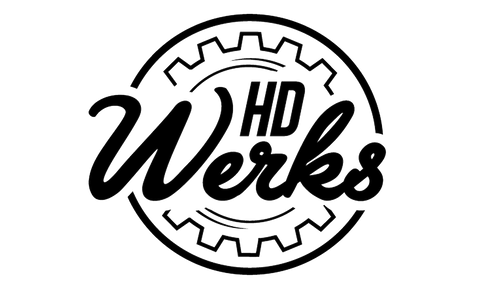Every JDM aficionado recognizes that true performance transcends mere horsepower figures. It’s about the synergy between engine, chassis, electronics, and human interaction. From the hum of a finely tuned RB26DETT to the throttled roar of a K20 with precise cam timing, mastering each component demands a systematic approach. This guide delves into every aspect—mechanical, electronic, and ergonomic—so you can craft a JDM masterpiece that delivers track-worthy precision on any road.
Engine Essentials: Building a Robust Powerplant
Pistons, Rods, and Crankshaft Upgrades
- Forged internals: Opt for high-strength pistons and connecting rods to withstand high-boost or high-rev scenarios.
- Balance and blueprint: Match rotating assemblies to reduce vibration and improve throttle response.
- Crankshaft options: Consider billet or nitrided crankshafts for durability under sustained load.
Camshafts and Valvetrain Dynamics
- Profile selection: Choose cam lifts and durations tailored to your desired powerband.
- Valvetrain reinforcement: Install stiffer springs, retainers, and hardened pushrods to prevent float at high RPM.
- Timing chain tensioners: Upgrade to performance-grade tensioners to maintain precise timing under stress.
Intake and Exhaust Optimization
- Cold-air induction: Position your intake to draw denser air, improving combustion efficiency.
- Free-flow exhaust: High-quality manifolds and cat-back systems reduce backpressure while retaining JDM character.
- Silencer tuning: Balance drone suppression with desired exhaust tone for street and track use.
Precision Boosting: Turbocharging and Supercharging Strategies
Modern JDM icons often rely on forced induction. Whether you choose a bolt-on turbo kit or a centrifugal supercharger, follow these key steps to extract reliable boost:
Compressor and Turbine Matching
- Compressor maps: Analyze surge and choke lines to pick a compressor wheel suited to your displacement.
- Turbine housing A/R ratio: Optimize spool characteristics for low-end punch or top-end power.
Intercooling and Charge Cooling
- Front-mounted vs. top-mounted intercoolers: Weigh packaging constraints against cooling efficiency.
- Water spray kits: Emulate aviation-grade cooling techniques reminiscent of aircraft engineering.
Chassis and Handling: Translating Power to Pavement
Suspension Architecture
- Coilovers with adjustable dampers: Fine-tune rebound and compression for corner-carving stability.
- Anti-roll bars: Upgrade to stiffer, adjustable bars to reduce body roll without compromising compliance.
- Bushing choices: Polyurethane or solid bushings deliver more direct feedback compared to stock rubber.
Steering and Braking Enhancements
- Quick-ratio steering racks: Enhance steering response for rapid direction changes.
- Big brake kits: Larger rotors and multi-piston calipers ensure fade-free stopping under track conditions.
- Brake bias adjustment: Fine-tune front-to-rear distribution to match your driving style.
Electronics and ECU Mastery
Standalone Engine Management Systems
- Software flexibility: Choose ECUs with customizable fuel, ignition, and boost control maps.
- Data logging: Record parameters in real time to diagnose anomalies and validate dyno runs.
Sensor Integration
- Wideband O2 and EGT gauges: Monitor air-fuel ratio and exhaust temperatures for safety and efficiency.
- Drive-by-wire calibration: Optimize throttle mapping to achieve linear power delivery.
By exploring diverse tuning options—similar to assessing the best options for aircraft loan underwriting—you ensure each electronic parameter aligns with desired performance goals.
Maintenance and Longevity: Sustaining Peak Performance
Fluids and Filtration
- High-temp synthetic oils: Retain viscosity under extreme heat cycles.
- Performance-grade coolants: Prevent detonation by maintaining stable combustion chamber temperatures.
- Oil and fuel filters: Upgrade to high-flow units to safeguard against contaminants.
Routine Inspection Protocols
- Valve clearance checks: Keep valvetrain geometry within spec to avoid misfires.
- Bolt torque audits: Verify fastener tension on manifolds, turbo flanges, and suspension mountings.
- Compression and leak-down tests: Spot early signs of wear or head gasket failure.
Aesthetic and Ergonomic Refinements
Driver-Centric Cockpit Design
- Adjustable racing seats: Balance lateral support with lumbar comfort for long drives.
- Steering wheel options: Pick a diameter and dish that suit your grip and visibility needs.
- Shift knobs and pedaling: Position for optimal heel-and-toe technique.
Exterior Detailing
- Aero enhancements: Front splitters, side skirts, and rear diffusers to sculpt airflow.
- Lightweight wheels: Reduce unsprung mass for sharper turn-in and better traction.
- Paint and wrap finishes: Protect panels while showcasing your unique style.
Conclusion
By deconstructing each element—from internal engine geometry to final calibration—you achieve a harmonized JDM build that excels under scrutiny. This MECE-driven roadmap equips you to make informed decisions, balancing track ambitions with road-day reliability. Whether you’re chasing milliseconds on the local circuit or commanding presence at an exclusive car meet, these principles will keep your build on the cutting edge.
Frequently Asked Questions
What is the first step in creating a high-performance JDM build?
Begin with a thorough assessment of your goals and budget, then upgrade internals and induction components in a structured sequence to avoid compatibility issues.
How do I choose between turbocharging and supercharging?
Consider your powerband targets: turbos often provide more top-end power, while superchargers deliver instantaneous throttle response. Packaging and cost also play crucial roles.
How often should I recalibrate my ECU maps?
After significant hardware changes—like new camshafts, turbos, or intake manifolds—perform dyno-based recalibrations. Periodic track log reviews can highlight when further tuning is required.

